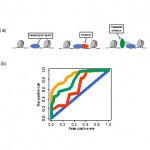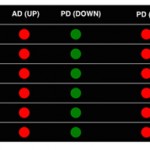Summary
Our research is highly interdisciplinary, involves a number of international collaborators and focuses on the uncharted territory of non-coding RNAs involved in transcriptional and translational regulation (X-chromosome inactivation, differentiation processes) and neurodegenerative diseases (Parkinson’s α-synuclein, Alzheimer’s disease amyloid protein APP, TDP-43 and FUS). The group plays a role in projects aiming to uncover regulatory mechanisms controlling protein production. More specifically, we are interested in understanding interactions whose alteration lead to aberrant accumulation of proteins. We previously observed that association between proteins and their cognate mRNAs (autogenous associations) induce feedback loops that are crucial for protein homeostasis. We recently investigated human protein-RNA networks and identified transcripts that bind specifically to aggregation-prone proteins and we are characterising protein-RNA assemblies whose formation is toxic.
Research projects
- Transcription factor networks. We found that transcription factors recognize DNA patterns together with their cofactors. We developed a method, PAnDA, to predict protein-DNA interactions based on cell-specific protein networks, which opens up the way for efficient and effective manipulation of cellular processes (Figure 1).
- Cancer and Neurodegenerative disease. It has been reported that genes up-regulated in cancer are often down regulated in neurodegenerative disorders and vice versa. We performed a large-scale analysis of physico-chemical properties on human genes to understand which specific features could differentiate classes of diseases (Figure 2).
- Discovery of RNA-binding regions. A number of studies indicate that a previously unknown number of proteins have RNA-binding ability. We introduced a method to identify RNA-binding regions by considering physico-chemical properties of polypeptide chains.
- Ribonucleoprotein assemblies and disease. We are interested in understanding the relationship between formation of ribonucleoprotein assemblies and pathology. We propose a model in which low-complexity domains of Fused in Sarcoma FUS drive its physiologically reversible assembly into membrane-free, liquid droplet and hydrogel-like structures that occur in Amyotrophic Lateral Sclerosis.
- Gene sets classification. We developed a new approach to provide accurate classifications of physico-chemical features and annotations of biological processes, molecular functions and cellular components, which is extremely useful for the discovery and characterization of trends in protein datasets.

